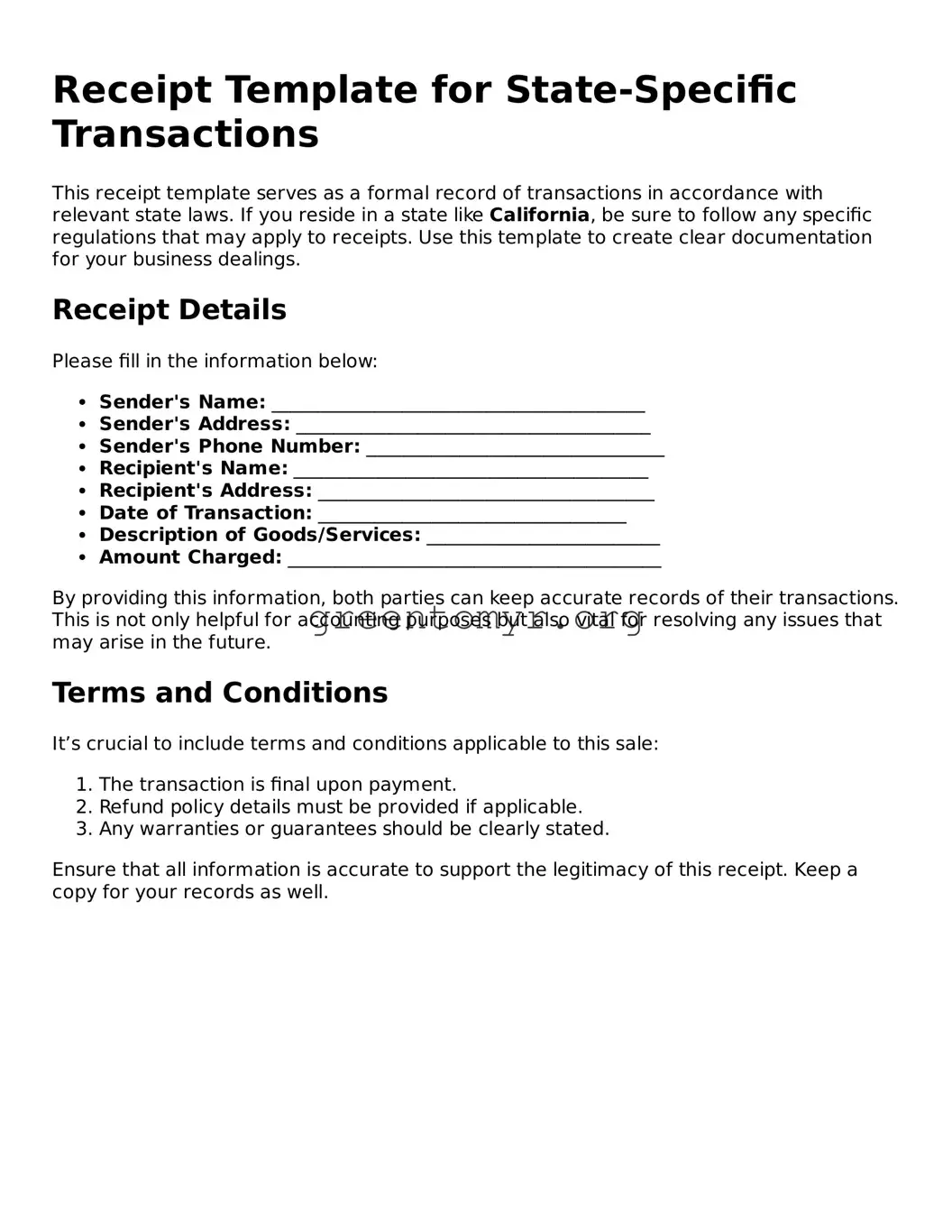Completing a receipt template form may seem straightforward, yet many individuals often make mistakes that can lead to confusion or even disputes later. One common error is failing to provide accurate and complete information. When filling out the form, it’s essential to include all relevant details, such as the buyer's name, the seller's name, the date of the transaction, and a clear description of the items or services exchanged.
Another frequent mistake is neglecting to quantify the items accurately. If an item is sold in bulk or if different units are involved, it’s important to specify each one clearly. For instance, “5 gallons of paint” should be detailed instead of a vague “paint.” This ensures clarity for both parties regarding the transaction.
People also often overlook the importance of noting the payment method used. Whether the payment was made in cash, by check, or through a credit card should be explicitly mentioned. This detail can help resolve any disputes regarding payment if they arise in the future.
A significant error is failing to include the total amount paid. The receipt should clearly reflect not just individual item costs but also the final total, inclusive of any taxes or fees. Omitting this could lead to misunderstandings down the line about what was paid.
Not dating the receipt or providing an incorrect date is another frequent oversight. The date of the transaction is crucial for establishing when the exchange occurred, especially for warranty considerations or tax purposes. Missing this can complicate matters significantly.
Another mistake involves using unclear or ambiguous language in the item descriptions. Phrases like “various items” or “miscellaneous goods” should be avoided. Instead, a specific list of the items or services sold should be provided. This clarity helps both the buyer and seller understand precisely what has been exchanged.
Many people forget to sign the receipt or provide both parties' signatures, especially in transactions involving larger amounts. A mutual signature adds a layer of agreement that can be crucial in case of disputes. A signed receipt is more likely to be accepted as proof of the transaction.
Some fail to keep a copy of the receipt for their records. Retaining a duplicate is essential for personal bookkeeping, warranty claims, or returns. Without a copy, you may find it challenging to provide proof of purchase in the future.
Lastly, individuals may neglect the template's layout and formatting. A cluttered or poorly organized receipt can make important details difficult to find. Utilizing a clean and clear format enhances readability, allowing all necessary information to be quickly understood and processed.
Being mindful of these common mistakes when filling out a receipt template can significantly improve the clarity and utility of the document. Attention to detail will help avoid potential issues and provide peace of mind for both the buyer and seller.
